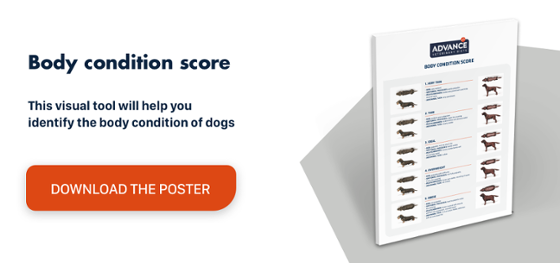Vaginitis in dogs: causes, diagnosis and treatment
Vaginitis in dogs occurs in entire or sterilised females of any age or breed and its main manifestation is a purulent, mucoid or mucopurulent vaginal discharge.
Introduction
Vaginitis in dogs is a relatively common problem in whole or sterilised females of any age or breed.1.2 Female dogs are usually clinically healthy, but have purulent, mucoid or mucopurulent vaginal discharge, which hardly ever contains blood. 1 Other signs such as licking of the vulvar area, pollakiuria and perivulvar or vulvar dermatitis may occur.3
From an aetiological point of view, the recommendation is to divide cases of vaginitis according to age of presentation and to distinguish between juvenile vaginitis and adult onset vaginitis in adult female dogs.4
Causes of vaginitis in dogs
Juvenile vaginitis is a condition that occurs before puberty and may appear as early as 2 or 3 months of age as a heavy purulent vaginal discharge. It usually goes away spontaneously after the first oestrus, so the biggest problem with its management is to convince the owner that it is normal and will resolve with the appearance of the first oestrus.4.
Vaginitis in adult bitches may occur due to structural, congenital or acquired problems or urinary tract disorders.1 Various causes have been described such as extensive perivulvar dermatitis (associated with redundant vulvar folds), clitoral hyperplasia, vestibulovaginal stenosis, vaginal foreign bodies, uterine stump granuloma, urinary incontinence, chronic urinary tract infection (with urethritis, vestibulitis, vulvitis), urogenital neoplasms, or vaginitis due to primary infection.2.3
Diagnosis
The presumptive diagnosis is based on a complete history and the findings of the physical examination, particularly of the genitals. The recommendation is to perform basic tests such as blood count, serum biochemistry, urine analysis (preferably with the sample obtained by cystocentesis) and urine culture.
Vaginal swabs are also indicated for bacteriology and cytology obtained, in the case of juvenile vaginitis, from discharge on the vulvar lips or with anterior swabs in adult females.1 Cytological characteristics help to differentiate vaginitis in dogs from other causes of vulvar discharge, because the vaginal exfoliative cytology is inflammatory with a significant presence of polymorphonuclear leukocytes.1
Radiography or, more specifically, ultrasound of the urogenital tract can help identify abnormalities and rule out differential diagnoses. If no problems are revealed by ultrasound, vaginoscopy under sedation or anaesthesia should be considered.3 This should include views of the external vulva, vestibule, clitoral fossa, urethral papilla and/or urinary bladder/urethra, vestibulovaginal junction, vagina, and caudal cervix. The appearance of the mucosa along the tract, the presence of masses, foreign bodies and the origin of any secretion should be determined.3
Treatment
If a specific cause of vaginitis is identified, resolution is usually quite straightforward. Removal of foreign bodies 2 or surgical correction of anatomical abnormalities are curative.1 In the case of urinary tract infection, appropriate treatment helps to reduce vaginitis. Surgery and/or chemotherapy are indicated when urogenital masses or neoplasms are detected.3
If no specific causes are identified for the secretion and the condition is therefore primary, the use of local antibiotics or mild disinfectants is usually effective.4 It is also recommended that analgesic and anti-inflammatory treatment be instituted in most cases, particularly with NSAIDs instead of corticosteroids due to the increased risk of urinary tract infections associated with the latter.3 In ovariectomised female dogs, the use of oral oestrogens or oestrogen creams has been shown to be helpful.3
In juvenile vaginitis, the disorder resolves with the onset of the first oestrus and antibiotic treatment is not usually effective, despite the use of different antibiotics. In certain circumstances, owners urge the veterinarian to apply a treatment despite the recommendation to wait for the first oestrus, and in such situations, washing the vagina with water-soluble antibiotics or a highly diluted disinfectant may be helpful.4
Conclusions
Vaginitis in dogs manifests as purulent, mucoid or mucopurulent vaginal discharge in entire or sterilised females of any age or breed. It can be caused by structural, congenital or acquired problems, or disorders of the urinary tract. If a specific cause is identified, resolution of vaginitis requires treating the underlying problem and, if idiopathic, the use of local antibiotics or mild disinfectants is usually effective.

